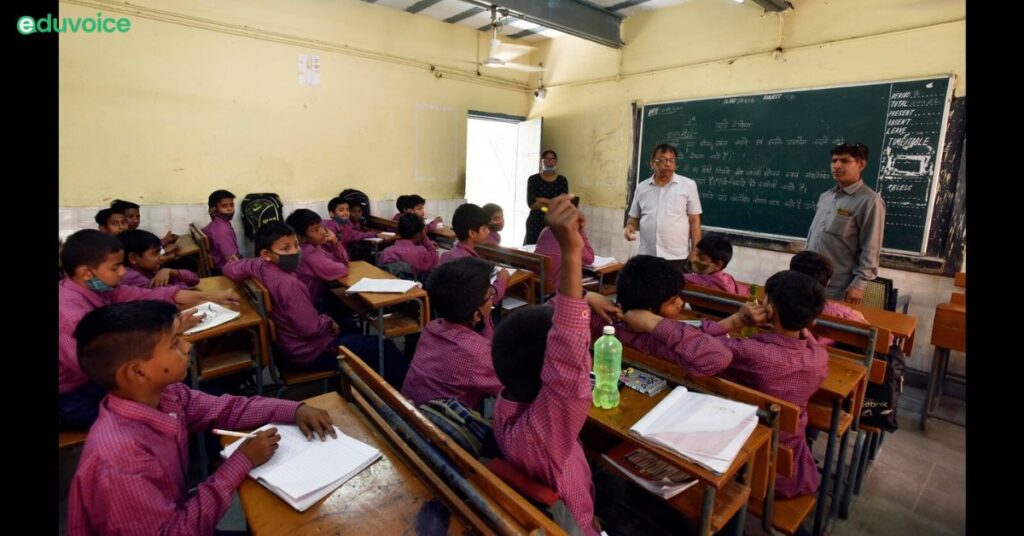When the Pradhan Mantri Ujjwala Yojana (PMUY) was launched in 2016, under the leadership of Prime Minister (PM) Narendra Modi, our greatest challenge was reaching the last woman in the remotest recesses of India with liquefied petroleum gas cylinders. With a dedicated workforce and political will, the PMUY’s success has given me confidence that we will be able to undertake the challenging task of implementing the new National Education Policy (NEP) 2020, too.
India is one of the youngest countries in the world, with more than 50% of the population below 30. But concerted efforts and policy interventions are required to translate this demographic potential into a dividend. Some experts suggest that India will be an aging society by 2050, with nearly 20% of the population above 60 years. So, we have a little more than two decades to tap the potential of the youth, or what PM Modi refers to as the Amrit Kaal, the 25 years leading up to the 100th year of Independence. Hence, we need to overhaul the system to cater to the needs and aspirations of our young people. NEP 2020 is one such transformation in the nation’s journey. In the words of PM Modi, NEP 2020 will serve as the foundation of an Atmanirbhar Bharat (a self-reliant India).
NEP 2020 restructures our education ecosystem: From pre-primary to higher education, and also reconfigures the system with skills and a research ecosystem. It stands on the four principles of access, quality, equity, and affordability. It aims to enhance the gross enrolment ratio in higher education to 50% by 2035 from the current level of 27.1% by instituting the Higher Education Commission of India (HECI) — a single regulatory body in place of the University Grants Commission (UGC). It will ensure that independent and empowered bodies will execute regulation, accreditation, funding, and academic standard-setting. Some of the many progressive recommendations in NEP include Experiential learning at all stages, innovative and activity-based pedagogies, multiple entry/exit options in higher education, multidisciplinary education, and establishing an academic bank of credit. There is also much emphasis on the internationalization of education and study in India programmes with corresponding policy reforms to accommodate these sweeping changes.
NEP 2020 also recognizes immediate challenges. It calls for urgently ensuring that every student attains foundational literacy and numeracy by Class 3. The national mission on foundational literacy and numeracy, NIPUN Bharat, has been launched so that every child achieves foundational literacy and numeracy by class 3 by 2026-27.
It calls for governments at all levels to ensure that the medium of instruction up to at least Class 5 is in the mother tongue or local language for improving the learning process. Our government also focuses on local languages in higher education because it considers all languages as national languages. More than 200 technical books in local languages at the undergraduate level and for diploma courses have been launched. The government is trying to promote textbooks in engineering, medicine, and law in local and official languages. Efforts are being made to make entrance examinations available in all major languages.
We need to restore the high respect and status of the profession to inspire and motivate our teachers. Our government is focusing on providing opportunities for self-improvement and continuous professional development. Not only in school education, but the faculty of our colleges and universities shall also learn about the latest technologies and innovations and different forms of pedagogies. We are building world-class centers for teacher training. The current budget has also made provisions for digital teachers with an allocation of ₹6 crores.
The last two years have been unprecedented due to the pandemic and unexpected geopolitical events. However, the positive part is that this challenging time has given birth to innovations. A number of innovative models came up during the pandemic. Based on the principle that technology is an equalizer and enabler, the Union Budget made provisions for 200 new TV channels for education dissemination, allocating about ₹930 crores in five years.
Emergent technologies such as Artificial Intelligence, robotics, and automation provide ample opportunities and challenges, because scores of traditional jobs may fade away. But it will also bring roles more adapted to a new division of labour between humans, machines, and algorithms. Hence, the window of opportunity to reskill and upskill workers has become shorter, and one must act now to train the vast chunk of the youth.
The 21st century is a century of knowledge. India as one of the oldest civilisations and knowledge societies, has a natural advantage in becoming a “captain” in navigating emerging economies toward a prosperous future. I believe after the Constitution, NEP 2020 is one document which has been shaped after multiple levels of deliberations, discussions, and participatory dialogues across the country. Like the Constitution, NEP 2020 will lead us out of decades of dilemma and doubt and inculcate a deep-rooted pride in being Indian in thought, spirit, intellect, and deeds. It integrates students, teachers, parents, and society for holistic development and achieving their full human potential.
Our youth aspires to work as not just job-seekers but job-creators as well. If we can provide them with quality knowledge and skills, we will be able to make India the vishwaguru (world leader) our freedom fighters dreamt of. NEP 2020 is engendered to do just that. This will be our contribution to nation-building, as we mark 75 years of Independence.
For More Such Articles, News Update, Events, and Many More Click Here






